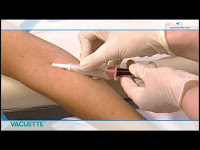 In September of 2014, CW was driving his motorcycle in northwestern New York and collided with another motorcycle. A police officer responded to the accident scene and reportedly noticed the odor of alcohol on CW. The officer asked CW to take a breath test, and CW refused. The officer ultimately obtained a blood sample from CW and charged him with DWI (known as OVI in Ohio). The officer then sent the blood sample to be tested. The test revealed a blood alcohol content of 0.00. Last week, five months after CW was charged with DWI, the case was finally dismissed, as reported by the Genesee Sun.
In September of 2014, CW was driving his motorcycle in northwestern New York and collided with another motorcycle. A police officer responded to the accident scene and reportedly noticed the odor of alcohol on CW. The officer asked CW to take a breath test, and CW refused. The officer ultimately obtained a blood sample from CW and charged him with DWI (known as OVI in Ohio). The officer then sent the blood sample to be tested. The test revealed a blood alcohol content of 0.00. Last week, five months after CW was charged with DWI, the case was finally dismissed, as reported by the Genesee Sun.
If this case occurred in Ohio, it would have likely gone through the same process. When an officer in Ohio suspects a driver is under the influence, the officer requests a breath test, blood test, or urine test. In cases where a blood test or urine test is used, the results of the test are not immediately known to the officer. Despite not having the test results, officers routinely charge people with OVI immediately after the blood or urine sample is obtained. The blood or urine sample is then sent to a laboratory for analysis, and the analysis typically is not completed until weeks or months after the person is charged.
In cases involving blood/urine tests, there are two types of OVI charges which may be filed. First, the suspect is charged with OVI ‘impaired’. The ‘impaired’ charge accuses the suspect of operating a vehicle with driving ability impaired by alcohol and/or drugs. The ‘impaired’ charge is not dependent on the results of a blood/urine/breath test. Second, if the test results show an alcohol or drug level at or above the prohibited concentration (the ‘legal limit’), the suspect is charged with OVI ‘per se’. The ‘per se’ charge accuses the suspect of operating a vehicle with a prohibited alcohol or drug level. The ‘per se’ charge does not depend on whether suspect’s ability to drive was impaired.
In the case of CW, the officer likely charged CW with DWI ‘impaired’ on the day of the accident. If the blood test revealed an alcohol level above .080, CW would have also been charged with DWI ‘per se’. As the blood test revealed there was no alcohol in CW’s blood, CW was never charged with DWI ‘per se’.
It was appropriate for the prosecutor to dismiss the ‘impaired’ charge. I suppose the prosecutor could have maintained the charge and tried to prove CW’s ability to drive was impaired by alcohol. Doing so could end badly for the prosecutor, as rules of professionalism require a prosecutor to seek the truth and only pursue a charge when the charge is supported by probable cause.
Probable cause is also the standard for an officer to file charges. The blood test result makes me wonder what evidence the officer observed before charging CW with DWI. The report by the Genesee Sun references the odor of alcohol but does not mention any evidence indicating CW was under the influence. It does mention his refusal of the breath test, but that is not necessarily evidence he was under the influence: it may be evidence he was justifiably indignant about the officer’s request.
Charging people with OVI without test results can have unfortunate consequences, as it did for CW. Hopefully he will have the case sealed so there is no public record he was even charged with DWI. Having the public records sealed, however, does not undo the embarrassment he experienced when he was arrested or the anxiety he experienced for five months while the case was pending.
 Columbus OVI/DUI Attorney Blog
Columbus OVI/DUI Attorney Blog

